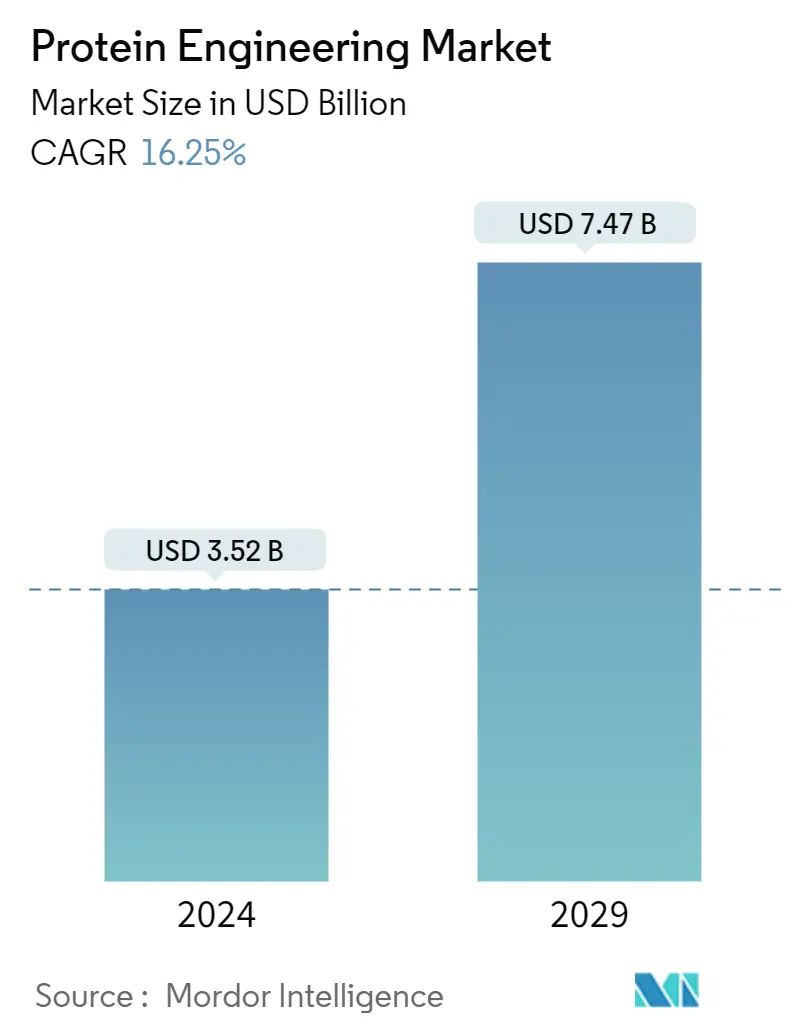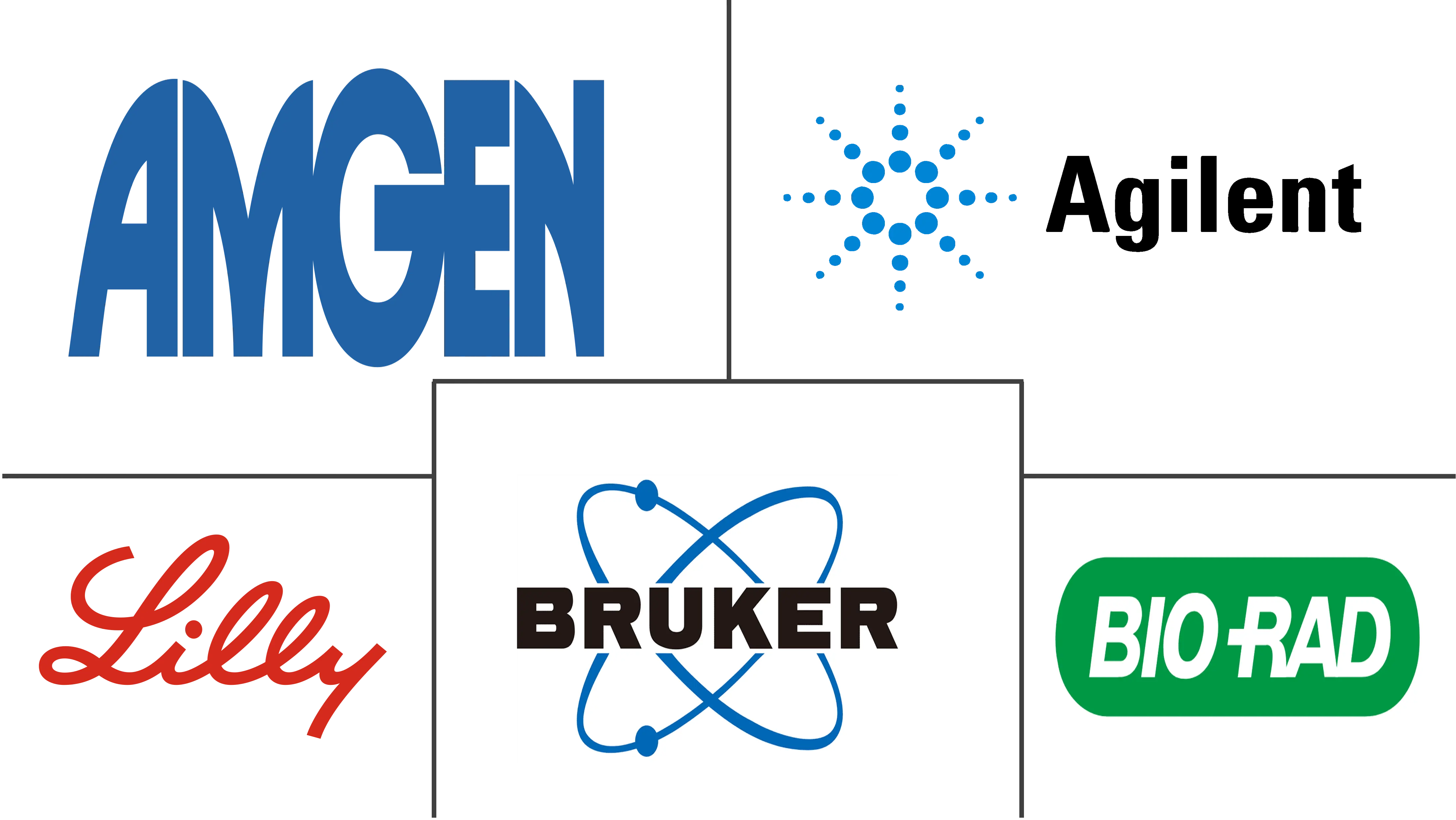Market Size of Protein Engineering Industry

| Study Period | 2021 - 2029 |
| Market Size (2024) | USD 3.52 Billion |
| Market Size (2029) | USD 7.47 Billion |
| CAGR (2024 - 2029) | 16.25 % |
| Fastest Growing Market | Asia Pacific |
| Largest Market | North America |
Major Players
*Disclaimer: Major Players sorted in no particular order |
Need a report that reflects how COVID-19 has impacted this market and its growth?
Protein Engineering Market Analysis
The Protein Engineering Market size is estimated at USD 3.52 billion in 2024, and is expected to reach USD 7.47 billion by 2029, growing at a CAGR of 16.25% during the forecast period (2024-2029).
The propelling factors for the growth of the protein engineering market include the increase in chronic diseases, the rise in demand for targeted therapies, and rising government funding for protein engineering studies. For instance, an article published in April 2023 in the Journal of the Advanced Practitioner in Oncology mentioned the advantages of targeted therapy for improving the response and survival rate among cancer patients. It was observed that the targeted therapy helped oncologists personalize cancer therapy and enhance patient outcomes. Thus, the demand for protein engineering is expected to increase as the use of engineered proteins for targeted drug activation enhances the control of pharmacokinetics and pharmacodynamics and reduces side effects. Such factors are anticipated to propel market growth over the forecast period.
The increasing prevalence of chronic diseases such as cancer fuels the demand for protein-engineered therapies that recognize different molecular targets to regulate the related signaling pathways and kill tumor cells. For instance, according to the 2024 updated data published by the American Cancer Society, around 20 million cancer cases have been diagnosed worldwide, and it is projected to reach 35 million by 2050. Thus, the expected increase in cancer cases is expected to raise the need for effective therapies, which is anticipated to boost the growth of the protein engineering market over the forecast period.
Furthermore, new product launches and collaborative strategies adopted by key players are anticipated to fuel the demand for protein engineering to develop protein-based therapies, propelling market growth. For instance, in April 2023, Swiss Adaptyv Biosystems Sàrl launched two fast-feedback tools that allow cheap, rapid, and miniaturized validation of AI-designed proteins. The new tool is intended to open the way for protein designers to develop new medicines, novel enzymes, and sustainable materials. Similarly, in January 2022, Amgen and Generate Biomedicines entered a research collaboration to discover and create protein therapeutics for five clinical targets across several therapeutic areas and multiple modalities. Hence, the increasing number of strategic activities by key players for efficient protein engineering research helps drive the market's overall growth.
Therefore, factors such as the increasing prevalence of chronic diseases, the growing demand for targeted therapies, and strategic initiatives by key players contribute to market growth. However, the high costs of protein engineering techniques are likely to restrain market growth over the forecast period.

